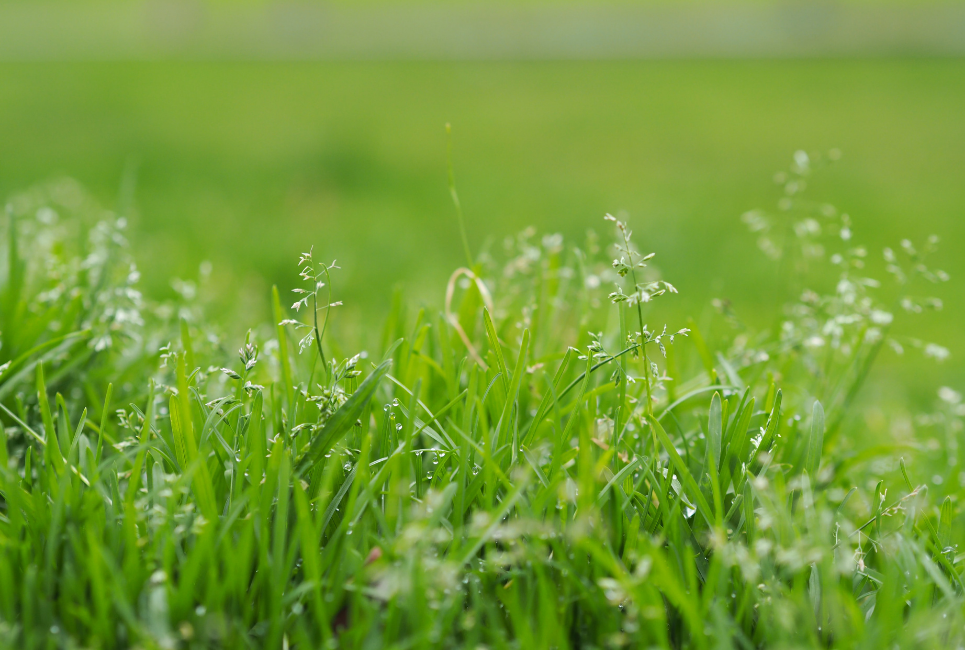- Popular Types of Bermuda Grass Explained - April 21, 2022
- When to Mow New Grass - April 18, 2022
- Best Troy Bilt Push Mower: How to Find The Right One - April 25, 2021
Thinking that there is such a thing as a St. Augustine grass seed is a common misconception, as this type of grass doesn’t produce harvestable seeds. Hence, what is meant by the best St. Augustine grass seed is actually a variety that can be obtained either as a sod, spring, or plug.
Despite variations in color, all varieties of St. Augustine grass are famous for their ability to grow fast and their demand for well-drained soil.
As a warm-climate grass, varieties of St. Augustine become dormant during the winter season and they are not suited for regions that don’t have a lot of insolation throughout the year.
So, in this article, we are going to take a look at some of the best St. Augustine grass varieties and help you choose the one that is best suited for your lawn.
The Top 9 St. Augustine Grass Varieties
| Classic St. Augustine | Check latest price here |
| Citra Blue | Check latest price here |
| Raleigh | Check latest price here |
| Palmetto | Check latest price here |
| Amerishade | Check latest price here |
| Floratam | Check latest price here |
| Bitterblue | Check latest price here |
| Seville | Check latest price here |
| DelMar | Check latest price here |
Classic St. Augustine
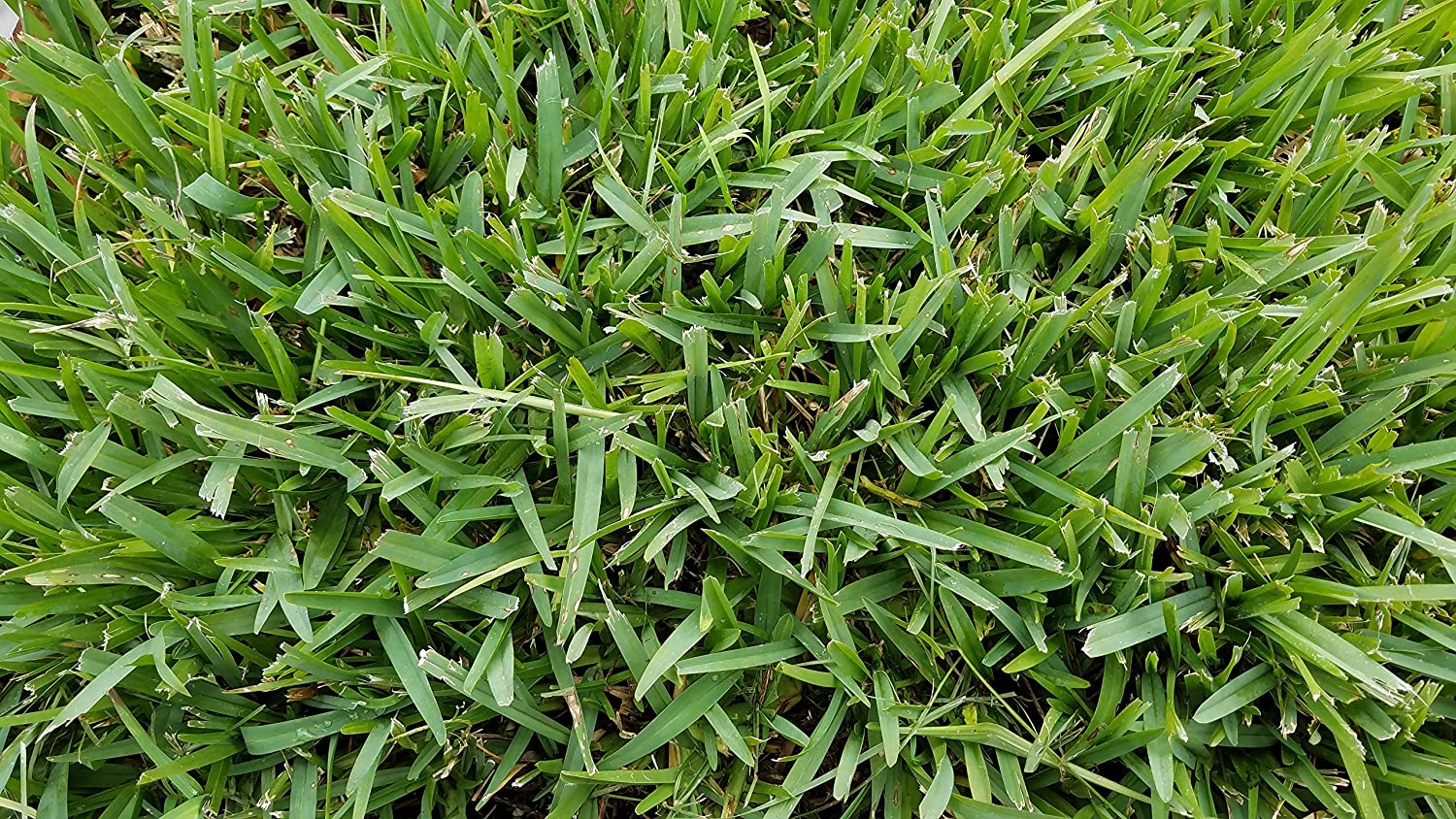
Homeowners living in mild and colder climates should choose the Classic St. Augustine grass, as exposure to low temperatures doesn’t affect it as severely as other St. Augustine varieties. Besides, the insect and disease resistance reduces the need for extensive care about your lawn.
The Classic St. Augustine grass also has an excellent shade tolerance, so you won’t have to worry about the amount of sun exposure it gets daily. However, establishing this grass takes patience as it needs to be watered daily for at least a month.
Once it is established, Classic needs to be watered heavily at least two times per week. You should also mow the lawn on a weekly level to prevent the blades from growing longer than 4 inches.
It is recommended to leave the clippings on the lawn, which is the reason why you should use a reel mower to cut the Classic St. Augustine grass.
Pros
- Great shade tolerance
- Recognizable green color
- Low thatch build-up
- Not susceptible to diseases
Cons
- Requires frequent mowing
- Takes a long time to establish
Citra Blue
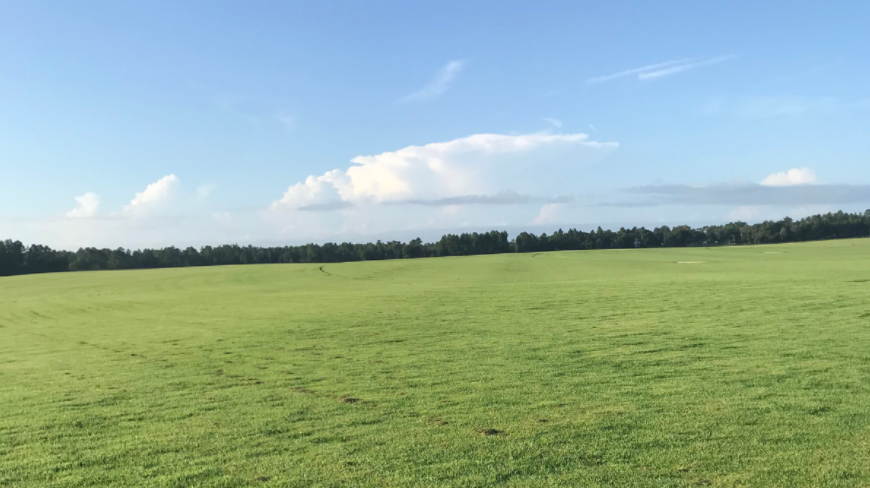
Green-blue color and relatively wide blades distinguish the Citra Blue from other St. Augustine varieties. Getting a soil test kit before opting for this grass could be a good idea as the Citra Blue thrives in soils that have an acidity level in the range between 6.0 pH and 6.9 pH.
The Citra Blue needs a lot of water in order to develop a root system, and you must water it several times per week to get the best result. Watering this variety of St. Augustine grass during hot and dry months is particularly important as it tends to dry up without proper irrigation.
Despite having good shade and wear tolerance, you shouldn’t plant it in areas with high traffic as it is highly likely that it will get damaged. What’s more, the Citra Blue is not immune to the St. Augustine Decline (SAD) virus and you must use fungicides to protect it from this virus.
Pros
- Beautiful green color
- Citra Blue is not affected by the shade
- Good saline tolerance
- Requires nitrogen fertilization
Cons
- Now well suited for high traffic areas
- May suffer from the SAD virus
Raleigh
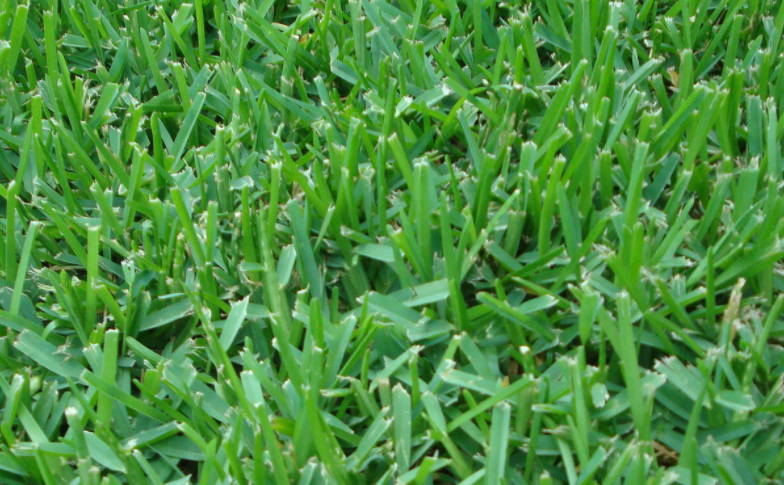
If you are looking for grass that has a high cold tolerance, St. Augustine Raleigh could be the right choice for you. Besides performing well at low temperatures, this St. Augustine variety is also unaffected by shade or heat.
Its remarkable drought resistance makes Raleigh a perfect choice for warm climates, but you will still have to water several times per week in order to maintain its natural medium-green color. Raleigh is also resistant to wear, and it won’t be affected by moderate usage of the terrain on which it was planted.
Establishing this St. Augustine variety can be a slow process, as you will have to supply it with a lot of water before it develops a deep root system. Raleigh requires protection against insects and diseases even though it is naturally resistant to the SAD virus.
This St. Augustine variety was developed at the University of Florida and it became commercially available in 1985.
Pros
- Great tolerance of low and high temperatures
- Can withstand short periods of droughts
- Develops a deep root system when watered properly
- Spreads quickly once it is established
Cons
- Chinch bug attacks and brown patch disease can damage this grass
- High maintenance requirements
Palmetto
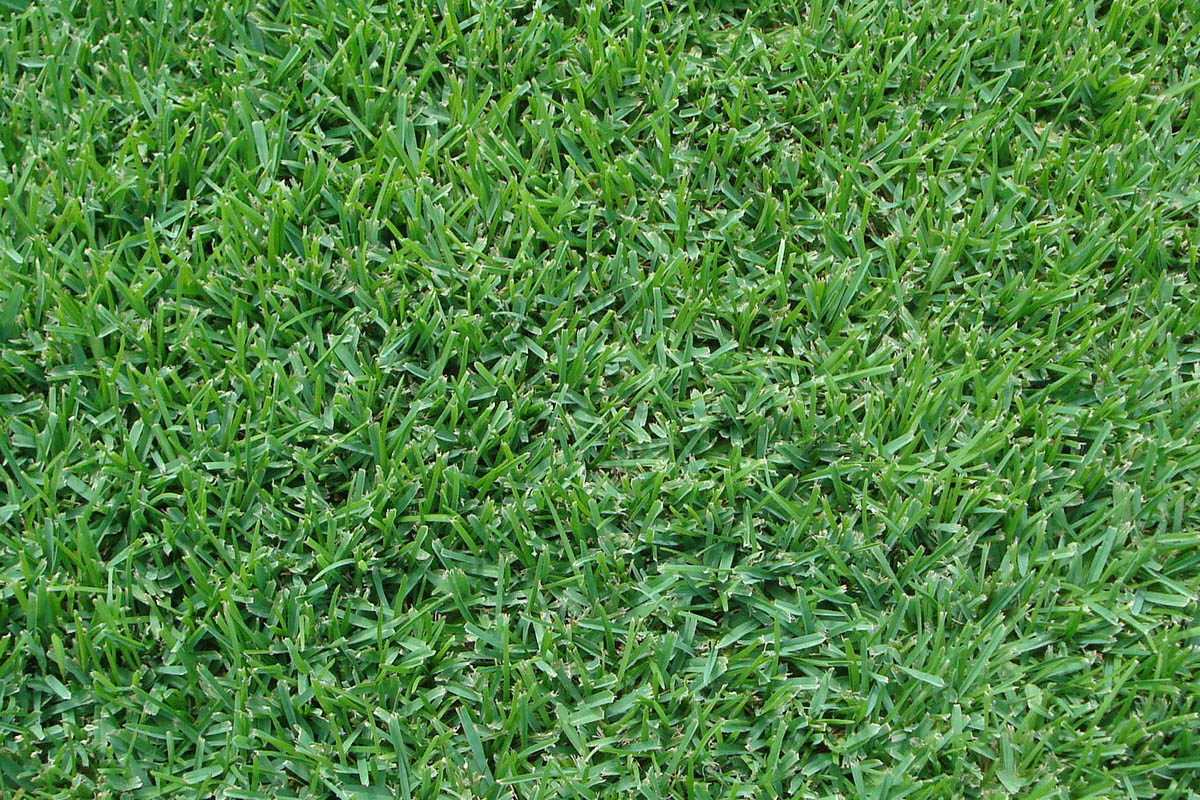
Even though it looks almost the same as Raleigh, the St. Augustine Palmetto has slightly wider blades. Establishing Palmetto involves extensive irrigation, but you should keep in mind that overwatering can lead to potential diseases.
This variety of St. Augustine has a characteristically deep and large root system that protects it from sporadic periods of drought. Despite the fact that Palmetto needs a lot of direct sun exposure, its shade tolerance is still impressive as it is unlikely that patches of grass that are in the shade are going to dry up.
However, Palmetto isn’t resistant to cold which makes it only a good choice for homeowners who live in tropical or subtropical climates. As a result of high density, you have to mow Palmetto grass once per week to prevent it from growing too long.
It is also worth noting that Palmetto is susceptible to different diseases throughout the year and you must take precautionary measures to keep it healthy.
Pros
- A large root system ensures that Palmetto can withstand a draught
- Good shade and wear tolerance
- Light green color
- Grows on different types of soil
Cons
- Doesn’t do well in cold climates
- Affected by different diseases
Amerishade

A dark green color set the St. Augustine Amerishade apart from other St. Augustine varieties. Besides, Amerishade has short internodes and its blades are not as long as those provided by other St. Augustine varieties.
Consequently, you don’t have mown Amerishade every week, but rather once in every two or three weeks. This variety spreads rapidly because it doesn’t have a tendency to grow vertically, which enables you to keep its height between 1 and 3 inches.
Amerishade requires frequent irrigation because its drought tolerance is very low. You should only plant it in low traffic areas because it doesn’t have a good wear resistance and it takes a lot of time until it recovers from injury.
Even though Amerishade isn’t often attacked by the decline virus, brown patch, sod webworms, and other issues that can slow its growth.
Pros
- Perfect for use in residential areas
- Spreads faster than most St. Augustine varieties
- Retains color in the fall
- Amerishade is highly weed resistant
Cons
- Slow recovery process
- Requires protection against insects and diseases
Floratam
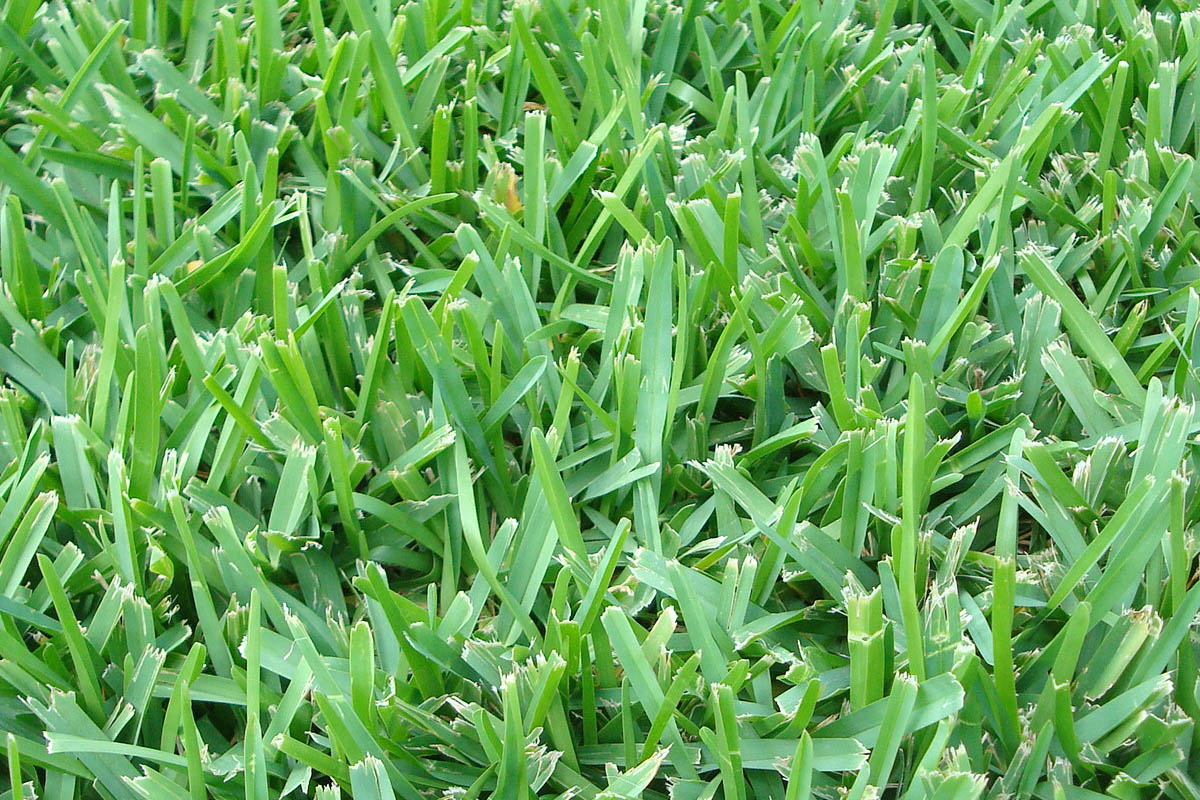
As one of the first St. Augustine varieties, Floratam has been commercially available since the late 1970s. This is probably one of the most recognizable St. Augustine varieties, because of the green-blue color that is associated with this type of grass.
Its stolons have light red color while its leaf blades are usually wide and long. Consequently, you will have to mow your lawn weekly in order to keep the grass between 2 and 4 inches.
Floratam doesn’t react well to low temperatures, and it is a poor choice for homeowners who live in regions that have long and cold winters. Despite being predominantly a tropical grass variety, Floratam doesn’t have high irrigation requirements, and you can water it once every few days.
This St. Augustine variety also needs a lot of sun exposure, and you may have a tough time maintaining it if your lawn is in the shade.
Pros
- Great for residential use
- Long and wide leaf blades
- Floratam retains color in the fall
- Low irrigation requirements
Cons
- Can’t withstand heavy traffic
- Almost completely shade-intolerant
Bitterblue
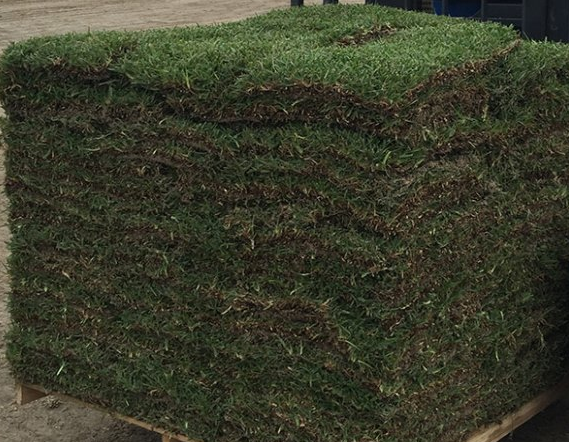
This is the first variety of St. Augustine grass ever developed, that has a finer texture than the common St. Augustine grass. Also, Bitterblue’s color is darker than the color of most St. Augustine varieties. Even so, it is often mistaken for Folratam due to the similarities in their appearance.
Moderately low temperatures don’t have a major impact on Bitterblue, so you can plant it on your lawn even if you don’t live in the tropical or subtropical region. Although its shade tolerance isn’t as impressive as Palmetto’s, it is fairly easy to maintain St. Augustine Bitterblue that is covered by shade.
This St. Augustine variety can withstand traffic, and you can plant it even in areas that have high traffic frequency. Bitterblue should be kept at a length between 3 and 4 inches, but you should still trim it once per week.
Pros
- Cold doesn’t affect Bitterblue
- Moderate irrigation requirements
- Grows on different types of soil
- Distinctly coarse texture
Cons
- Finding Bitterblue sods can be difficult
- Low tolerance to atrazine makes weed control almost impossible
Seville
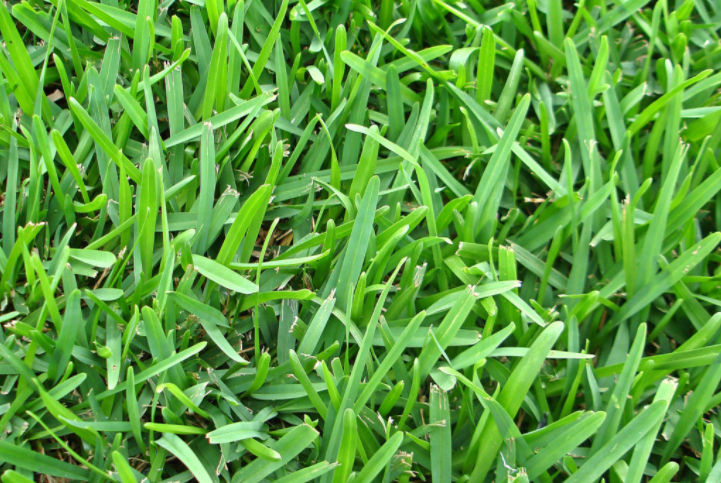
Shade tolerance is arguably one of St. Augustine Seville’s greatest advantages, as it doesn’t need more than a few hours of sunlight to flourish. Establishing Seville is a slow process that takes a few months, and frequent irrigation so that a deep root system can be developed.
Although there are no strict guidelines regarding how frequently you should trim Seville, it is recommended that you do so at least biweekly. Unlike other St. Augustine varieties, Seville should be kept at the length of approximately two inches for best results.
You won’t have problems fighting off weeds as Seville tolerates atrazine and similar herbicides that prevent the growth of broadleaf weeds. However, keeping the grass healthy can be difficult since it is susceptible to a variety of turfgrass diseases that are not easy to cure and it is often attacked by chinch bugs.
Pros
- Semi-dwarf grass that looks best when it is kept short
- Doesn’t need too much watering
- Suitable for colder environments
- Requires only a few hours of daily sun exposure
Cons
- Needs protection against turf diseases
- Long recovery time
DelMar

Excellent resistance to traffic makes St. Augustine DelMar suited for both residential and commercial use. The color of the grass is dark green, similar to the color of Amerishade or Floratam, while the texture of the leaves is coarse.
This St. Augustine variety changes its color to golden brown when it enters a dormancy period but it remains green even during the fall months. DelMar doesn’t need a lot of sunlight to grow, so you don’t have to worry if your lawn is in the shade during the day.
This is not a primarily tropical St. Augustine variety, and you can grow it even in colder climates, as low temperatures don’t stunt its growth. DelMar is highly resistant to the decline virus and fall armyworms, but sod webworms and brown patches can cause significant damage to it.
In addition, its salt resistance is impressive which enables you to plant it on different types of soil.
Pros
- Affordable and suitable for residential and commercial use
- Excellent weed resistance eliminates the need for herbicides
- Low-temperature tolerance allows it to grow in different climates
- Doesn’t require a lot of direct sun exposure
Cons
- Insects and diseases can damage DelMar
- Demands frequent mowing
The most important factors to consider while choosing a St. Augustine Grass Variety
All varieties of St. Augustine grass can make your lawn look more beautiful than ever before, but there are a number of factors that can help you decide which variety is the best choice for you.
The available sunlight on the surface on which you want to plant St. Augustine, weather conditions in the area where you live or the quality of the soil can all play an important role in how long it is going to take to establish a St. Augustine variety.
Here are some of the factors you need to consider before deciding which variety of St. Augustine grass you are going to choose. You should also read more about the best grass for sandy soil.
Lawn size
Knowing the size of the area on which you want to grow St. Augustine grass, will help you figure out how many pallets you are going to need. As we already mentioned, you cannot acquire St. Augustin seeds, and you must either purchase a sod, a spring, or a plug.
Moreover, only some varieties are resistant to daily wear, so you shouldn’t opt for a variety that will get damaged from too much traffic if you are planning on spending a lot of time on your lawn.
Terrain preparations and watering
You will just have to take standard soil preparation steps before plating any of the St. Augustine varieties. However, it will take at least a month to establish a deep root system, which is why it is important to irrigate the area extensively during that time.
You should avoid watering St. Augustine for a brief period of time every day since that is not going to be enough to establish a strong root system.
Mowing frequency
How frequently you have to mow St. Augustine grass depends on the variety. Most varieties have to be mowed once per week, while only a handful of varieties can be mowed twice per month.
Also, the length at which you should trim the grass varies from two to four inches so it is up to your preference how long the St. Augustine grass on your lawn is going to be. You shouldn’t attempt to cut the grass shorter than 1 inch because you may end up damaging it.
Local climate
All St. Augustine varieties are warm-climate grasses, and for that reason, it may be difficult to grow them in regions of the world that have long and cold winters. However, some varieties have a high tolerance for low temperatures and you should opt for them if you are not living in the tropical or subtropical region.
Shade tolerance
St. Augustine grass commonly needs a lot of sun exposure to thrive, but some of its varieties are modified so that they can tolerate shade.
Even so, you will have to ensure that the grass gets at least several hours of sun every day so that it can grow normally.
FAQs
Answer: There is no specific procedure you have to follow in order to plant St. Augustine grass since it is planted like any other grass that is only available in sods or plugs.
Answer: All varieties of St. Augustine grass start to grow in spring, once temperatures reach 80 to 100 Fahrenheit. They usually go dormant in the late fall and remain dormant throughout the winter.
Answer: Using fertilizers is recommended as it will enable you to establish the St. Augustine grass faster.
Answer: Only some varieties of St. Augustine grass prevent weeds from taking hold on your lawn, which is the reason why you must use a herbicide to root them out.
The Best St. Augustine Grass Seed
Even though St. Augustine is primarily a residential grass that is used for lawns, some of its breeds are resistant enough to wear so that they can be utilized on public and commercial surfaces.
Despite numerous similarities, each variety of this grass has its own particular set of features that makes it unique. In general, none of the St. Augustine varieties are going to perform well in cold climates, and you should only consider them if you live in a region that has long warm summers.
In summary, these are our top preferences:
- The best high wear resistance St. Augustine grass – St. Augustine DelMar
- The best St. Augustine grass for warm and cold climate – Classic St. Augustine grass
- The best shade tolerant St. Augustine grass – St. Augustine Seville
- The best looking St. Augustine grass – St. Augustine Floratam
Cultivating either of these varieties requires time and patience, but it certainly pays off as they make any surface on which they are planted look better.
We hope that this article has helped you select the St. Augustine variety that best fits your needs. Leave a comment below and let us know or continue reading about the best Bermuda grass seeds and our St. Augustine vs Bermuda Grass comparison.

